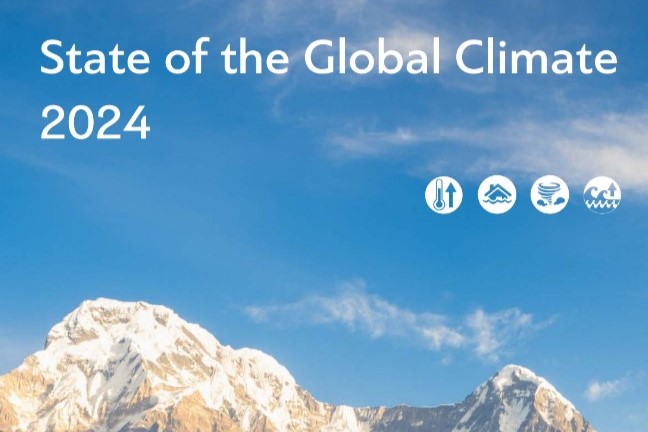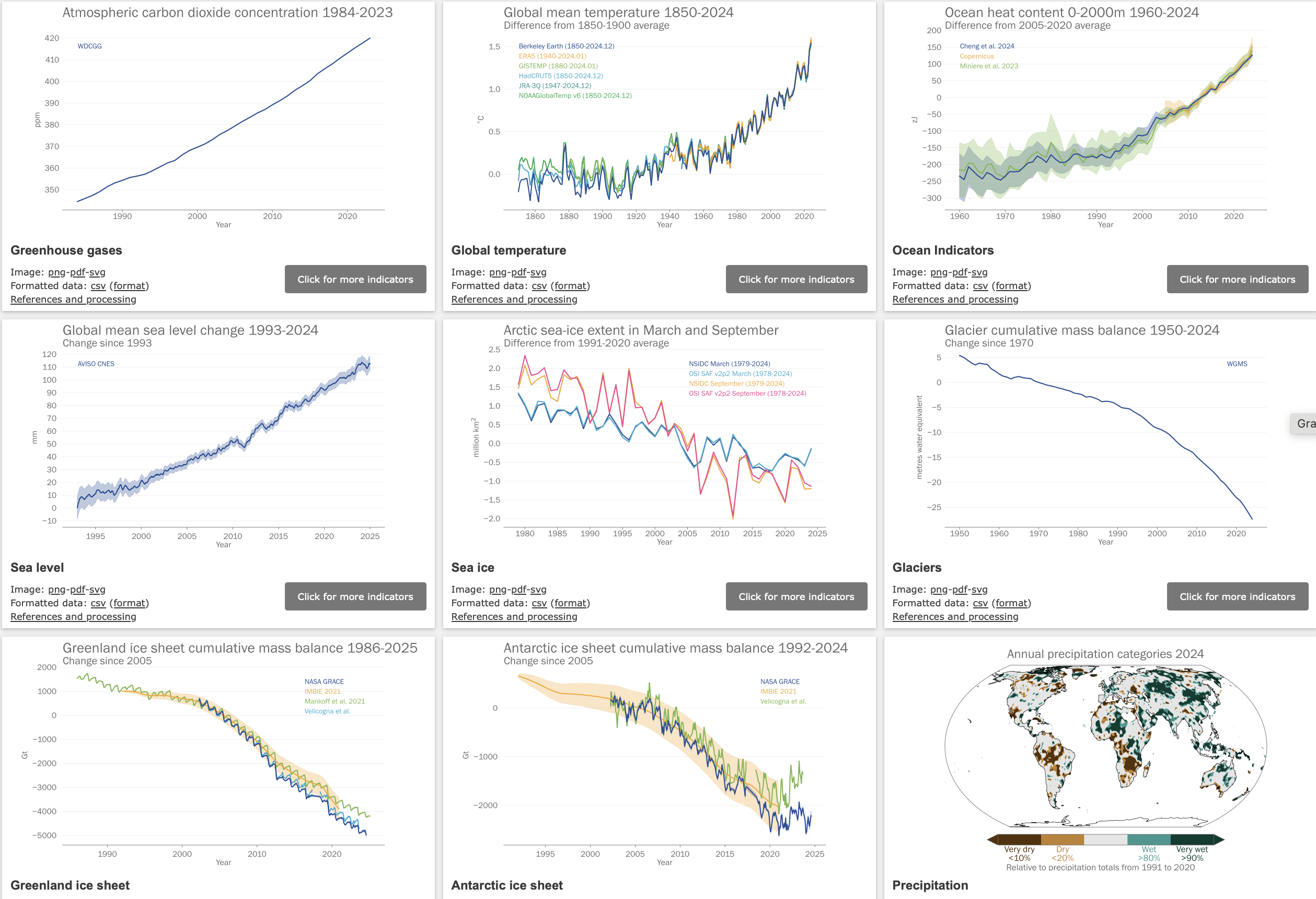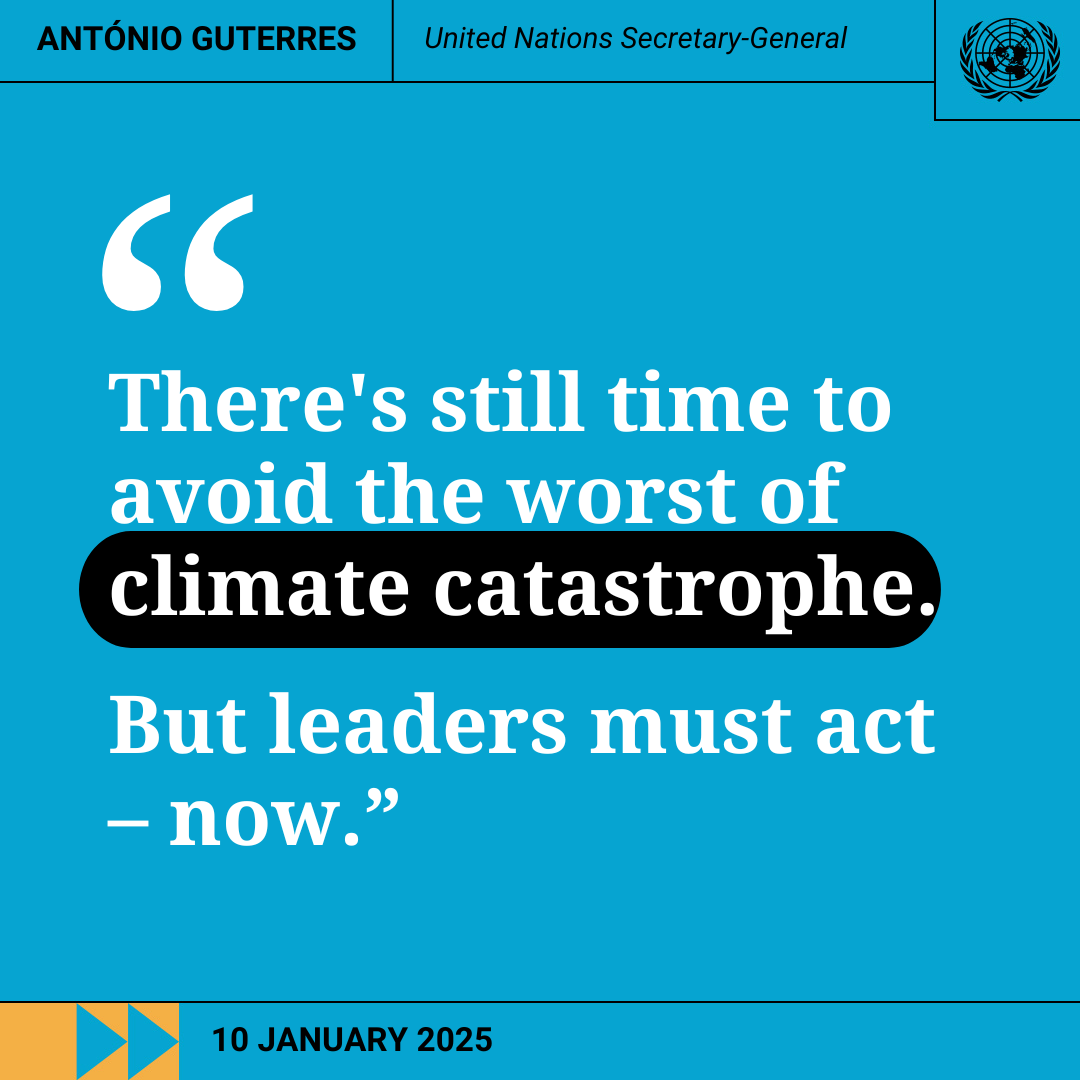

State of the Global Climate 2024
by Kirsty McCabe, FRMetS
Our climate is shifting faster than ever, with record-breaking temperatures, melting glaciers, rising sea levels and extreme weather events becoming the new normal. The World Meteorological Organization’s State of the Global Climate 2024 report paints a sobering picture of our planet.
Key findings
Temperature records were shattered in 2024, the first calendar year to be more than 1.5°C above the pre-industrial era. The WMO report reveals 2024 is the warmest year in our 175-year observational record, with global temperatures rising 1.55°C above the 1850-1900 average, beating the previous record set just the year before. Alarmingly, all of the ten hottest years on record have occurred in the past decade, from 2015 to 2024.
The record global temperatures of 2023 and 2024 were mainly due to the ongoing rise in greenhouse gas emissions, coupled with a shift from a cooling La Niña to a warming El Niño event. Other factors that may have contributed include changes in the solar cycle, a massive volcanic eruption and a decrease in cooling aerosols. But temperatures are just one of the seven key climate indicators that the report looks at.

Greenhouse gas concentrations reached their highest levels in 800,000 years, contributing to unprecedented ocean warming. In 2024, ocean temperatures were hotter than in any year on record. Over the past eight years, each year has set a record for ocean heat content, and the rate of ocean warming is now twice as fast as it was before 2005.
Sea levels also reached record highs in 2024, with the pace of sea level rise doubling since satellite measurements began. The world’s glaciers are disappearing at an alarming rate; the years 2022 to 2024 witnessed the largest glacier loss on record. Experts warn that reversing sea level rise and ocean warming would take hundreds to thousands of years, even if action were taken immediately.

The climate crisis is not only a future threat but a present reality. Extreme weather events in 2024 displaced 824,500 people, marking the highest number of new displaced individuals due to extreme weather since 2008. Over the course of the year, at least 151 extreme weather events were classified as "unprecedented", underscoring the intensifying nature of climate-related disasters.
Long-term data shows that human-induced global warming is now estimated at 1.34 to 1.41°C above the 1850-1900 baseline. While this figure is edging dangerously close to the 1.5°C limit set by the Paris Agreement, we have not yet crossed that critical threshold. However, the trend leaves little room for complacency, as the window for meaningful action continues to shrink.
Today WMO holds the ceremony for #WorldMeteorologicalDay!
The time to close the early warning gap is now. By acting now, investing, and innovating together, we can fulfill the promise of #EarlyWarningsForAll.
Join the movement: https://t.co/Q5azsd4yUp pic.twitter.com/gRaWaMAndd— World Meteorological Organization (@WMO) March 24, 2025
The report's release was published ahead of the 75th anniversary of the World Meteorological Organization (WMO) and World Meteorology Day on 23 March, World Water Day on 22 March and World Glaciers Day on 21 March. The theme for World Meteorology Day 2025 is “Closing the Early Warning Gap Together", highlighting the need to work collaboratively to improve early warning systems to better prepare for extreme weather and address the climate crisis.
A more visual overview of the WMO State of the Global Climate 2024 report can be found here.




